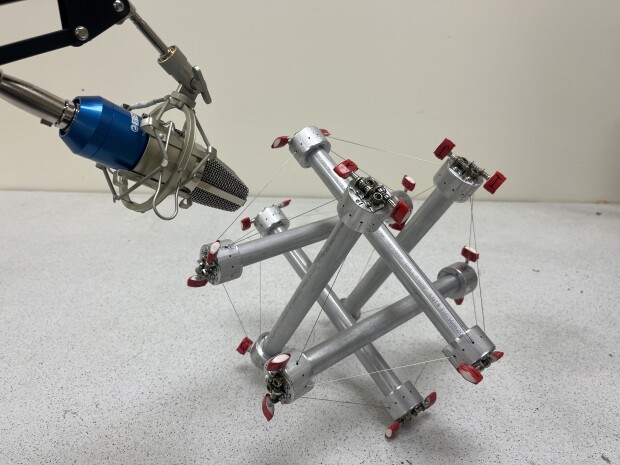String Tensioning Tensegrity
Research into how to measure cable tensions in a tensegrity model and their interactions.

Tunable Tensegrity
Tunable tensegrity allows for the changes in string tension after construction of the model. The method created was to use machine head instrument tuners placed at the end nodes of each bar which allow for the structure to be easily assembled by winding the cables. The tension in each cable can then be manipulated to precisely and independently change its length and the tension of the system.
Acoustic Cable Tension Measurement
The principal difficulty in current tensegrity research is being able to accurately and easily adjust the tension in the cable members. This acoustic method allows for easy and accurate adjustment of string tensions by using an acoustic measurement system. The structure is set in front of a microphone where each cable can be plucked and the resulting frequency is measured. The measured frequency is equated to a string tension using the equation:
f = sqrt(T/[M/L])/(2*L)
Where T is the tension in the spring, M is the linear density of the cable, and L is the length of the cable.